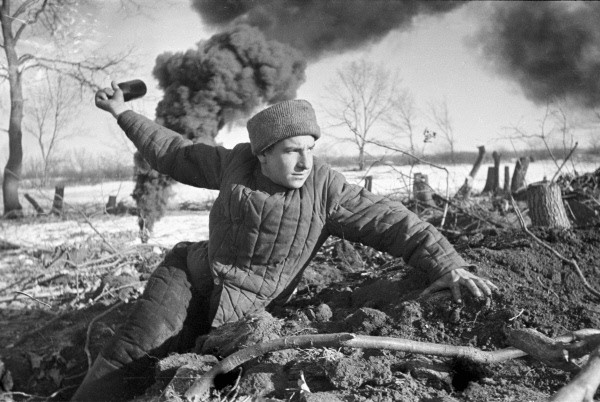
17 July 1942 – 3 Av 5702
The battle of Stalingrad begins. In the summer of 1941, Nazi Germany violated its pact of mutual non-aggression with the Soviet Union (the Molotov-Ribbentrop Pact). Operation Barbarossa was intended to be a lightning strike against Stalin’s Red Army, aimed to destroy it and conquer Russia’s Western territories. At first it seemed to be working. In a series of encircling maneuvers, large swathes of Russia were conquered and millions of Soviet troops were killed, wounded or captured. But by the beginning of winter in 1942, the Nazi attack was blocked on the outskirts of Moscow, and Hitler’s attempt to add the Soviet Union to his string of conquests ultimately failed.
By the end of the winter German progress had halted, and Hitler realized that his window of opportunity to overcome the Red Army was about to close, with the US announcement that it would enter the war. About to face attack on two fronts, the Germans decided to launch an extensive attack in the south of the Soviet Union. After a number of postponements, the German attack began on 17 July 1942. Though they advanced rapidly, the Nazis were unable to complete their classic pincer movement to entrap and destroy Soviet forces. The Red Army, having learnt the lessons of the previous summer, retreated too swiftly, enticing Hitler into a critical mistake.
The German attack forces moved forward so rapidly and so successfully that Hitler decided to deviate from his original plan and to attempt to achieve both his main objectives at one fell sweep: to conquer the Caucasus Mountains and block the Volga river to commercial shipping, near Stalingrad. The Wehrmacht’s Army Group South was divided into two, each with a separate mission, which in hindsight, neither half was strong enough to achieve. Advancing on Stalingrad, the Germans reached the city’s industrial zone. But then Stalin pulled out all the stops to save the city that bore his name.
He sent General Chuikov – one of the Red Army’s most talented commanders – to defend the city “at all costs.” Chuikov held Stalingrad, wearing down the German army and even launching a counter offensive. Each side lost over half a million soldiers in the fighting, but for the Germans, whose reserves were much smaller that the Red Army, the losses were far more critical.
Though the battle of Stalingrad ended with no clear victor, it put an end to the Nazi attempt to win the war on its Eastern front. It was also the Red Army’s first successful major counter-attack. As such it was a turning point in the Second World War, signalling the beginning of German retreat, and leading eventually to Germany’s final defeat three years later. For the Jews, it was a crucial battle. Not only did many fight in the ranks of the Red Army, but the battle halted the Nazi death machine, preventing it from spreading deep into the heart of Russia and destroying the Jewish population there as it had in Ukraine.
